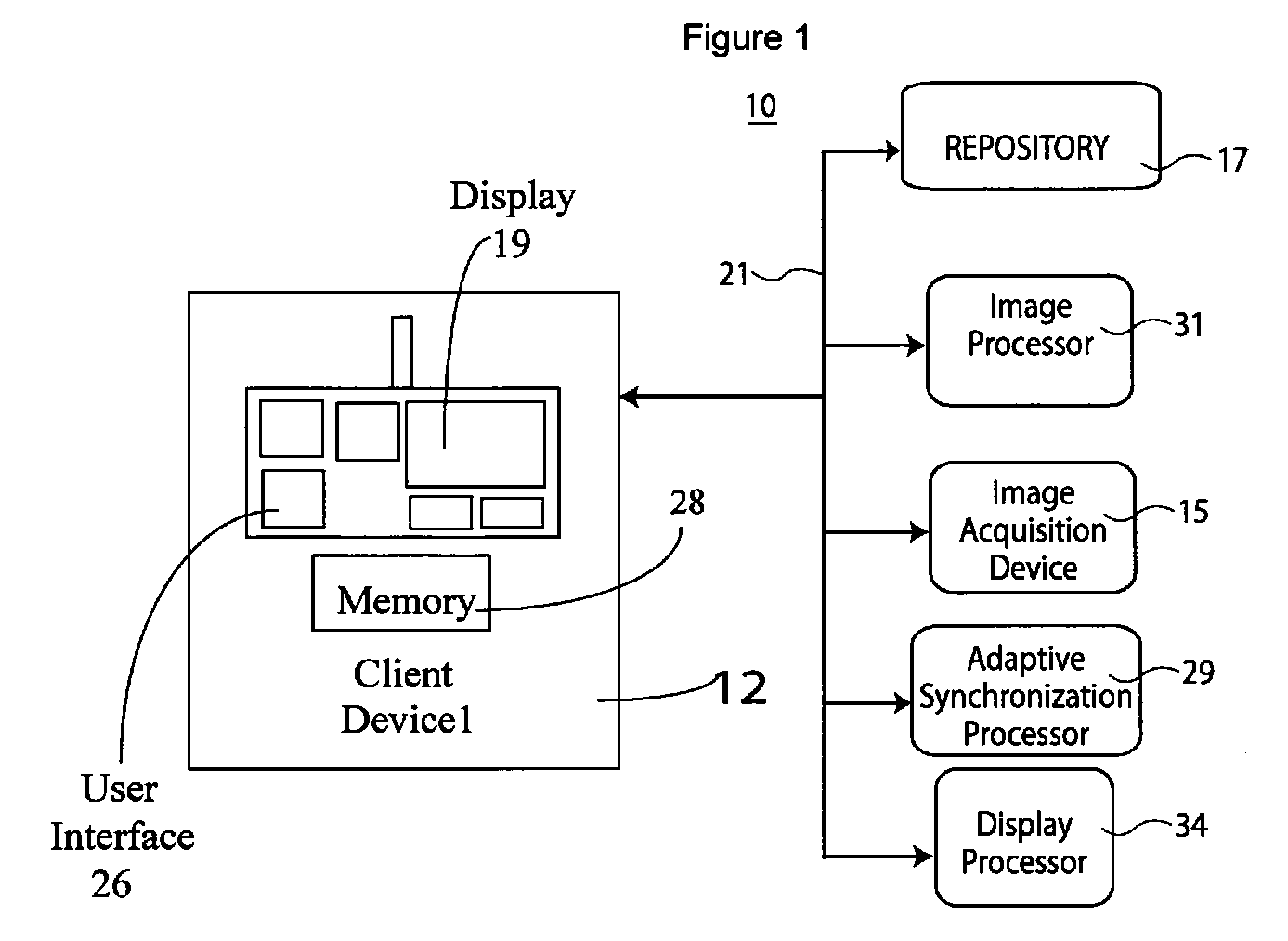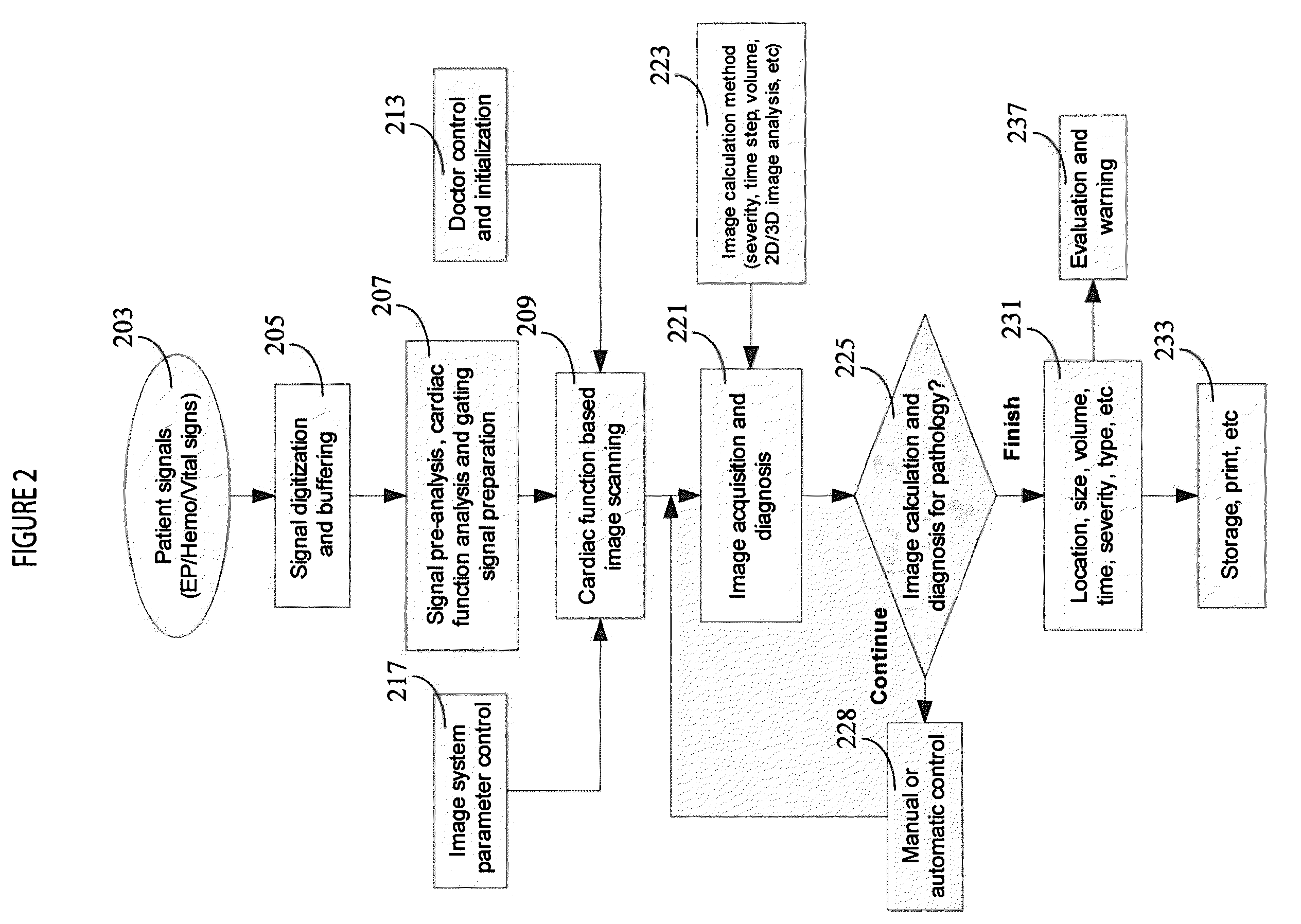Adaptive Medical Image Acquisition System
a medical imaging and image acquisition technology, applied in the field of medical imaging systems, can solve the problems of r wave not being the best signal, unable to accurately synchronize image acquisition for diagnosis of specific cardiac functions, and unable to achieve the best signal,
- Summary
- Abstract
- Description
- Claims
- Application Information
AI Technical Summary
Benefits of technology
Problems solved by technology
Method used
Image
Examples
Embodiment Construction
[0015]A system synchronizes and gates image acquisition with cardiac function signals (hemodynamic, electrophysiological, intra-cardiac blood pressure & vital signs signals) to improve precision, quality and reliability of image acquisition and diagnosis. Thereby the system advantageously excludes patient motion induced noise (heart beating and respiration) to determine an accurate image acquisition time as well as provide stable image capture, accurate image diagnosis, and cardiac tissue and function characterization (such as pathology type and severity). Cardiac function signals provide a precise and reliable time and phase of image acquisition synchronization for capturing and characterizing cardiac function and tissue status. The cardiac function signals synchronize imaging to help a physician provide a more objective and accurate diagnosis and medical treatment. Furthermore, the system provides safer use of an image system (such as an X-ray system) with less power usage and rad...
PUM
 Login to View More
Login to View More Abstract
Description
Claims
Application Information
 Login to View More
Login to View More - R&D
- Intellectual Property
- Life Sciences
- Materials
- Tech Scout
- Unparalleled Data Quality
- Higher Quality Content
- 60% Fewer Hallucinations
Browse by: Latest US Patents, China's latest patents, Technical Efficacy Thesaurus, Application Domain, Technology Topic, Popular Technical Reports.
© 2025 PatSnap. All rights reserved.Legal|Privacy policy|Modern Slavery Act Transparency Statement|Sitemap|About US| Contact US: help@patsnap.com



